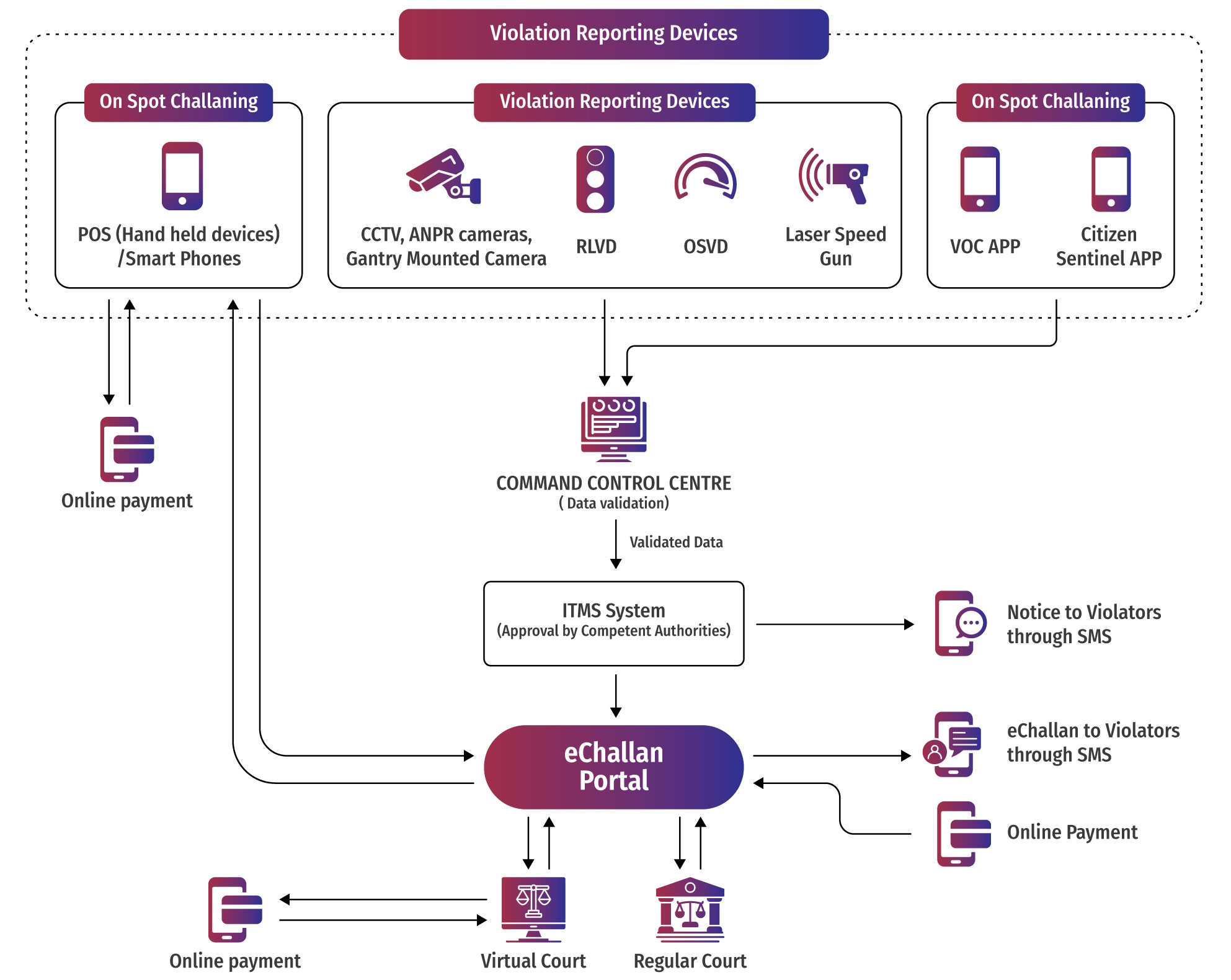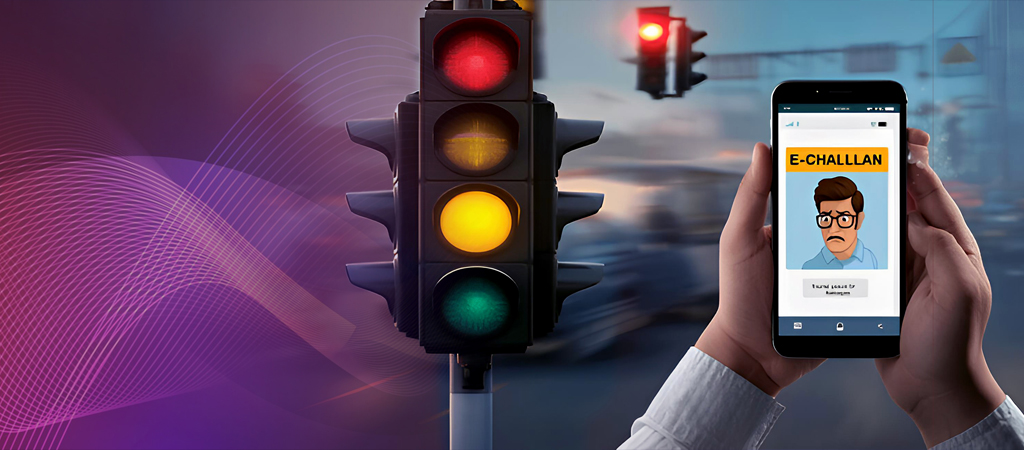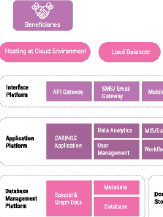The eChallan system, implemented across all 38 police districts of Gujarat under the “One Nation One Challan” initiative by MoRTH, is a comprehensive digital platform for traffic enforcement. Integrated with VAHAN, SARATHI, and Intelligent Traffic Management Systems, it enables real-time detection of violations, issuance of challans, and multiple payment options. Citizens receive instant notifications and can pay fines via mobile apps or web portals. Unpaid challans are forwarded to Virtual Traffic Courts after 90 days. The initiative enhances transparency, efficiency, and accountability, while empowering citizens with grievance redressal mechanisms and access to digital justice through virtual court proceedings.
The rapid urbanization of Indian cities has brought with it an urgent need for smarter traffic management and enforcement mechanisms. To address this, the Ministry of Road Transport and Highways (MoRTH) launched the One Nation One Challan (ONOC) initiative—a nationwide drive to digitize and streamline the process of traffic rule enforcement. Gujarat, a leading state in digital governance, has emerged as a pioneer in this space with the implementation of the eChallan system across all its 38 Police Districts.
Launched in 2023, the eChallan initiative in Gujarat is a transformative step in creating a transparent, accountable, and citizen-centric enforcement system, leveraging real-time surveillance technologies, mobile-enabled enforcement tools, and seamless integration with national databases such as VAHAN, SARATHI, and Virtual Courts.
Recognizing the challenges of traditional, paper-based traffic enforcement, the Gujarat government has adopted eChallan as part of its larger digital transformation journey. The system empowers traffic officers with mobile-based tools to issue fines on the spot, provides real-time notifications to violators, and offers multiple digital payment options to citizens.
Importantly, Gujarat is now in the process of setting up Virtual Traffic Courts under the ONOC umbrella, further strengthening the legal and administrative backend of traffic enforcement. This will allow cases to be adjudicated digitally, reducing the burden on physical courts and offering citizens a more accessible legal route.
Overview
The One Nation One Challan initiative is a flagship project of MoRTH, aiming to:
- Bring all enforcement and regulatory agencies—including the Traffic Police, Regional Transport Offices (RTOs), and Judicial Authorities—onto a single digital platform
- Ensure seamless exchange of information, automated enforcement, and centralized grievance redressal
- Enable a uniform implementation framework across states, allowing for better policy planning and traffic analytics
At its core, ONOC is a vision for interconnected governance—where technology bridges the gap between enforcement agencies and citizens.
System Architecture and Workflow
The eChallan system in Gujarat integrates with the Intelligent Traffic Management System (ITMS), using cutting-edge tools and applications to monitor and enforce traffic rules.
 Fig 6.1: eChallan Process Flow
Fig 6.1: eChallan Process Flow
1. Detection and Data Acquisition
Traffic violations are detected through a network of:
- Closed Circuit Television (CCTV) Cameras
- Automatic Number Plate Recognition (ANPR) Systems
- Interceptor Speed Guns
- Red Light Violation Detection (RLVD)
- Stop Line Violation Detection (SLVD)
These tools automatically capture images and videos of violations. The vehicle’s registration details are then fetched from VAHAN, while driver license data is retrieved from SARATHI, ensuring a verified and tamper-proof trail of information.
2. Digital Challan Generation
The system then:
- Generates an eChallan with detailed information about the violation
- Attaches geo-tagged and time-stamped photographic evidence
- Assigns the applicable sections of the Motor Vehicles Act
- Sends the challan to the mobile number linked to the vehicle
In cases where mobile information is unavailable, physical challans are dispatched to the registered address. The violator is notified through SMS and email, and is offered several convenient digital payment options:
3. Real-Time Notifications and Payment Options
The violator is notified through SMS and email, and is offered several convenient digital payment options:
- Credit/Debit Cards
- Unified Payments Interface (UPI) with Dynamic QR Code scanning
- eChallan Web Portal: https://echallan.parivahan.gov.in
- NextGen mParivahan Mobile App
These multi-channel touchpoints enhance user accessibility and foster timely compliance.
Virtual Traffic Courts: Enabling Accessible Justice
A major highlight of Gujarat’s eChallan initiative is the upcoming Virtual Traffic Courts, which are designed to:
- Eliminate the need for physical court appearances
- Allow violators to view their cases online
- Enable them to pay fines digitally and get cases marked as disposed
If the eChallan is not paid within 90 days, as per Rule 167(5) of the Central Motor Vehicle Rules (CMVR), the system automatically forwards the case to the Virtual Court, where adjudication proceedings begin. Violators may also opt to contest their case in a regular court if they prefer a physical hearing.
Grievance Redressal Mechanism
To ensure fairness and transparency, the eChallan system provides a robust grievance redressal facility. Citizens can:
- Raise concerns or disputes regarding issued challans
- Use the Complaint option on the eChallan portal
- Expect responses and resolutions from the competent traffic authority
This system ensures that every citizen has a voice in the process and can seek recourse in case of erroneous challans.
Compliance and Enforcement Measures
To enforce timely compliance, Rule 167(7) of CMVR states that if a challan remains unpaid beyond 90 days:
- The Licensing Authority and Registering Authority shall not process applications related to the driving license or vehicle registration
- Applications related to permits, fitness, and taxes of vehicles will continue to be processed
This clause serves as a compliance nudge, encouraging violators to resolve outstanding challans promptly.
Key Features of Gujarat’s eChallan System
End-to-End Digitization: Replaces manual challans with digital issuance and online payment
- Real-Time Notifications: SMS and email alerts on challan issuance
- Evidence-Based Enforcement: Geo-tagged, time-stamped photos attached with challans
- Multi-Agency Integration: Connected with VAHAN, SARATHI, and Virtual Courts
- Multiple Payment Channels: Online, mobile, and point-of-sale (PoS) devices
- Transparent Grievance System: Centralized complaint mechanism with timelines
- Automated Legal Escalation: Unpaid challans forwarded to Virtual Courts after 90 days
Impact in Numbers (As on 20 March 2025)
| Metric | Value |
|---|---|
| Total eChallans Generated | 66.79 Lakh |
| eChallans Forwarded to Virtual Court | 38.25 Lakh |
| Total Penalty Recovered | ₹497 Crore |
These numbers reflect not only the scale of implementation but also the success of the system in improving enforcement efficiency, revenue collection, and citizen participation.
Conclusion
The eChallan system in Gujarat stands as a model of modern digital governance—a system that is transparent, data-driven, and citizen-oriented. It represents the potential of technology to reimagine public service delivery, particularly in domains that directly impact everyday life.
With the integration of Virtual Traffic Courts, the state is further simplifying the path to justice and making the traffic enforcement process fair, efficient, and inclusive. As more states adopt the ONOC framework, Gujarat’s experience offers a valuable roadmap for building a uniform, scalable, and citizen-first enforcement ecosystem across the country.
Contributors / Authors
- Tag:
- Internet
- Technology
- eGov
- Tech
Pramod Kumar Singh
Deputy Director General & SIO
Block 13, 2nd Floor, Sardar Bhawan
Gandhinagar, Gujarat - 382010










